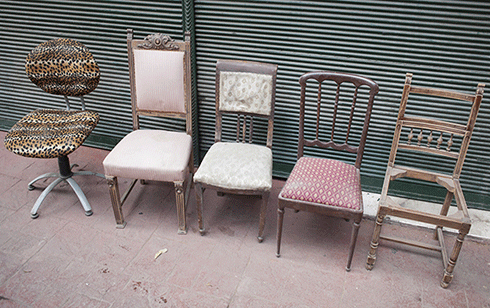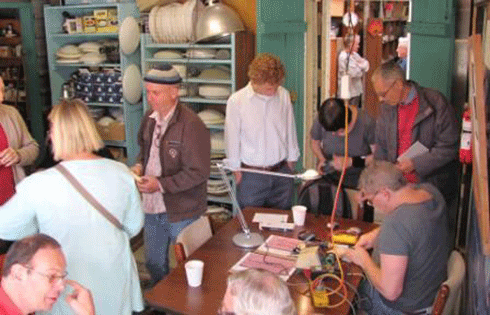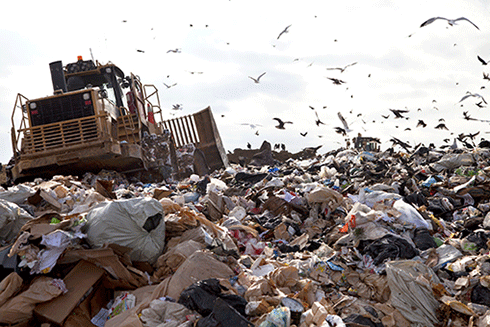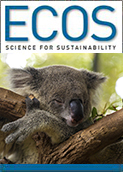
|
Published: 28 July 2014
From the ground up, there is wealth in waste
From repair cafes to research clusters; keeping resources out of landfill is better for the environment and economy.

|
|
Rethinking waste and learning the dying art of repair. Credit:
Thinkstock
|
In one year from 2009–10, Australia threw away 21.6 million tonnes of household and industrial waste. Per person, this makes us one of the highest waste producing nations in the world.
To cut down how much we waste, it might not be enough to take just our own bags to the supermarket and recycle when convenient. Reducing how much Australia throws away may require a fundamental change on how we manufacture and purchase products.
This change may include buying products that are repairable, consuming collaboratively and demanding a production system that doesn’t dump resources such as metals, plastics and chemicals into natural systems at the end of their life.
This kind of action to reduce our waste is already taking place on the ground and in research. At a grassroots level, community resources centres are leading the way by providing the tools and expertise to teach the skills of repair, keeping appliances and furniture out of landfill.
A Wealth from Waste cluster of researchers from Australian universities and CSIRO is looking at systemic changes to the way we consume and value resources. Within the group, researchers are looking at new business and consumption models.
Repair cafe to the rescue

|
|
A repair cafe in Sydney is teaching people how to fix broken household items. Credit:
The Bower
|
Repair Cafes are a recent global phenomenon. They are spaces where people drop in and repair anything – from broken appliances and furniture to electronics –with the help of experts and DIY enthusiasts. The repair cafe concept was dreamt up by a Dutch not-for-profit organisation that has helped hundreds around the world set up their own.
The new repair cafe in Sydney is located inside the Bower, a Marrickville reuse and repair centre. It’s the first repair cafe to open in the Asia Pacific region. Every Wednesday afternoon from 1–5 pm, it provides a social and relaxed environment for people to learn the skills of repair.
The cafe began its life at the beginning of the year with a crowdfunding Pozible campaign called ‘save the lamp’. It has since been awarded a grant that will secure its operation for the coming year.
Since opening, each week around ten people come with an item for repair. With the help of technical specialists, they return their item to working order. Sometimes it takes 10 minutes and sometimes it takes an hour or more.
Guido Verbist, Co-operative Manager at the Bower says that the café helps to divert waste from landfill through repair and reuse.
‘It can be so quick and easy to repair something, you just need to know what to do and what to look for,’ he says.
He makes it clear that it is not a free service, but free advice. People repair their own item with help and advice from the experts and other participants. There is cake and coffee, and discussion and collaboration with others at the cafe is a welcome part of the process.
Mr Verbist says that the repair process stimulates people to think, "Is this repairable?”, and “Should I buy things that are not repairable?”
People mostly bring in electrical appliances and some computers, but they also bring in broken furniture and bikes. Guido says they would like to offer the expertise and tools to repair clothes in the future.
The repair cafe hopes to teach the dying art of repair. Mr Verbist says that people who attend often don’t feel confident to give repairing a go. The cafe provides tools and know-how to inspire and encourage people to make a start.
Having a centralised place of repair also allows for a full consideration of safety. The cafe is aware of the risks involved with repairing electrical items and take every step they can to mitigate these risks. For electrical appliances, there are safety switches and a certified tradesman who can tag and test each item.
The repair cafe’s long-term objective is to tour to other neighbouring city councils, where the repair cafe could be managed by those councils.
A fundamental change in resource recovery
A CSIRO research cluster, Wealth from Waste is looking at both the barriers and enablers in the metals sector for generating and recovering wealth from waste.

|
|
More than $2 billion is lost to the Australian economy every year from failure to recycle waste metals. Credit:
Thinkstock
|
The Wealth from Waste research cluster brings together people whose expertise is in economics, social science and technical aspects.
Their research includes mapping and quantifying the amounts of valuable resources in waste – also called ‘above ground’ resources – such as minerals and metals tied up in ewaste and buildings.
They want to know what innovation and business models are needed to capture this value.
So far they have found that if we recycled the metal that ends up in landfill or discarded products, including iron, aluminium, and copper, we could meet about 70% of Australia's annual demand.
Institute for Sustainable Futures research principal Dr Nick Florin says the cluster’s research is looking at more than improving recycling. They are considering how re-use and remanufacturing of metal-containing products can become the norm.
‘The concept of a circular economy is emerging as a world-wide trend and we think it’s essential for Australia to unlock this $2billion a year of value,’ says Dr Florin.
‘Our research will involve characterising and testing new and innovative business and consumption models, such as leasing.’
In a circular economy, minerals, metals, plastics and chemicals are not dumped into natural systems at the end of their life, but are reused time and time again with minimal energy input.



